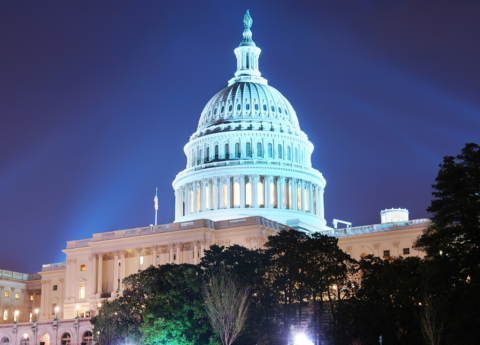The fact Kentucky has a severely underfunded pension system and that Gov. Matt Bevin plans to call a special session on the issue has been widely publicized. So has the round after round of state budget cuts in recent years. On top of those challenges are added fiscal problems, made even clearer recently, that present a daunting picture for the commonwealth in 2018 and beyond.
Last week, the state budget director appeared before the Interim Joint Committee on Appropriations and Revenue to provide an overview of the fiscal year that ended on June 30, 2017, and a look forward at what to expect in fiscal year 2018. The information presented is cause for concern:
1. Weakening revenues from sales and individual income taxes – The two major taxes that support the General Fund are the income tax (41.9 percent) and the sales tax (33.3 percent). Both underperformed in 2017, experiencing decelerating growth when compared to the prior two years, even though the economy grew. Over the years, the General Fund has declined as a share of the state’s economy, falling from 7.3 percent in 1991 to just 5.9 percent in 2017. This means the current tax code does not align as well as it should with how the economy and incomes are growing. Despite their underperformance, the income tax and sales tax still provided the bulk of the new revenue for the General Fund, as other revenue sources failed to pick up the slack. Overall, revenues were $138.5 million below the estimates on which the budget was based.
2. Revenues will need to be higher than the Consensus Forecast Estimate in 2018 because of 2017 shortfall – Because there was a shortfall in 2017, revenues must increase by 3.8 percent rather than the 2.4 percent estimated by the Consensus Forecasting Group to meet the levels required for the budget to balance in 2018. Revenue growth in 2017 was a lackluster 1.3 percent, so the trend is not good. In the letter accompanying the 2017 Annual Edition of the Quarterly Economic and Revenue Report, the state budget director states that this will be a “difficult hurdle to attain,” and his staff estimates growth of only 2.5 percent for the 1st 3 quarters of the 2018 fiscal year.
3. Necessary Governmental Expenses (NGEs) are growing unsustainably – NGEs were $85.3 million in 2017, which is $24.4 million more than in 2016. NGEs are expenditures that do not have a specific line item appropriation in the enacted budget. Historically NGEs have been emergency expenditures that cannot be easily predicted. Examples include fire suppression if the forest fire season is particularly bad, or amounts to cover the cost of addressing an emergency declared by the governor.
Over the past several years, however, the General Assembly has used NGEs as a technique in the budget to authorize the payment of recognized and known expenses without having to include those expenditures in the bottom line. In other words, the use of NGEs allows the General Assembly to pass a budget that actually spends more than the total enacted amount. In the 2016-2018 enacted budget, there are 21 separate expenditures authorized as NGEs rather than through appropriation of funds. The expanded use of NGEs is concerning because these expenses are not capped in any way as a normal appropriation would be and the total amount is not known until the books are closed at the end of the fiscal year. Further, the use of NGEs to pay for known expenses reduces the resources available in the Budget Reserve Trust Fund for true emergencies.
Of particular note are the increases in corrections expenditures paid as NGEs, which were $16.9 million more in fiscal year 2017 than they were in fiscal year 2016. Expenditures were higher primarily because prison populations are up, parole rates are down, medical expenses for prisoners have increased and the General Assembly reduced the amount requested by Gov. Bevin for the Department of Corrections for these expenses. Going into 2018, the state has 1,836 more prisoners than was anticipated at the time the budget was enacted. In addition, legislation passed by the General Assembly during the past two sessions enhancing penalties and sentences for drug related offenses will likely further increase the prison population beyond projections, which means that corrections-related NGEs could be higher in 2018 than they were in 2017.
4. The Budget Reserve Trust Fund may be depleted at the end of 2018 – The target for the Budget Reserve Trust Fund is that it be at least 5 percent of General Fund revenues, which would currently be $543.7 million. Going into fiscal year 2017, the budget reserve trust fund had a balance of $235.8 million. After deducting the 2017 NGEs from the total, the balance is $150.5 million. The General Assembly appropriated $56.7 from the fund for 2018 expenditures, leaving an available balance of $93.8 million, just 0.9 percent of General Fund revenues. The current balance will not be enough to cover 2018 NGEs if they continue to increase as they have over the past three years.
The fiscal year-end information presents a very sobering and challenging picture for the commonwealth going into 2018 and beyond without even considering the pension challenge and the many areas of the budget that are deeply underfunded after years of cuts. The budget situation is likely to worsen unless the General Assembly takes responsible action to generate needed new revenue.



